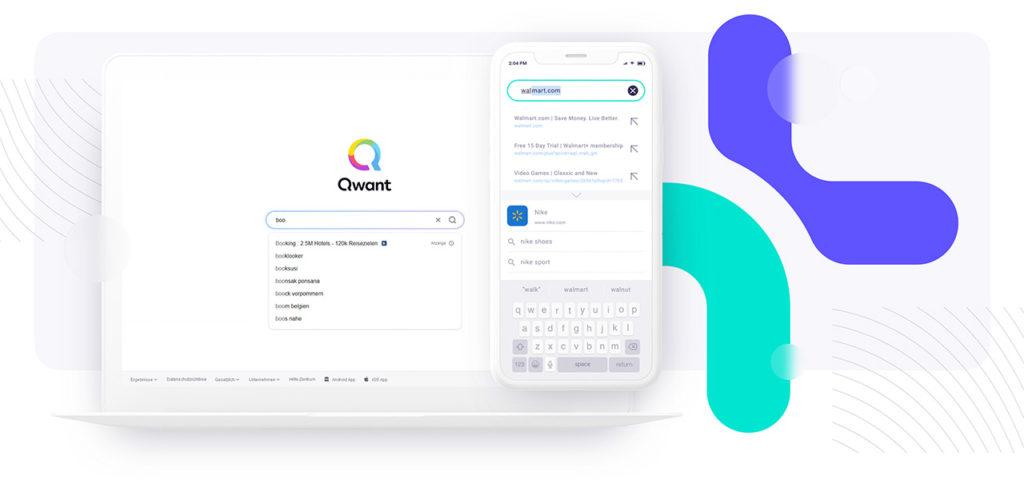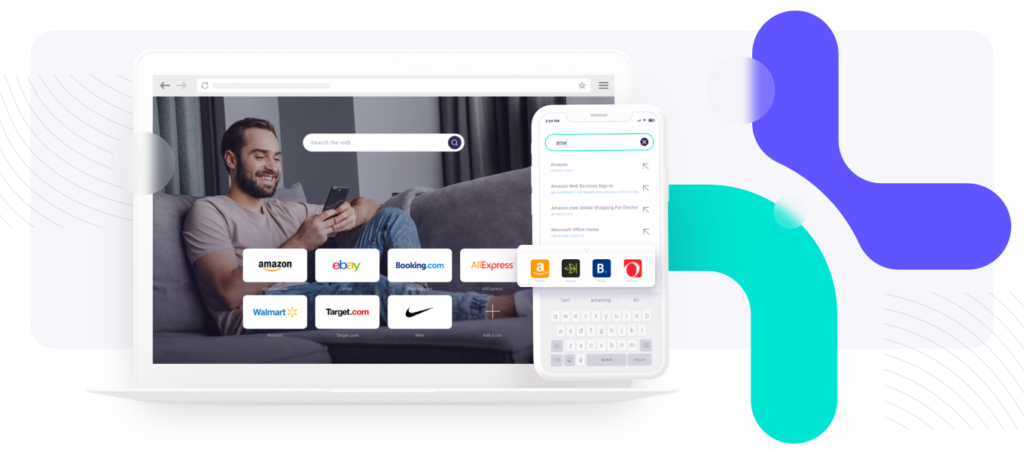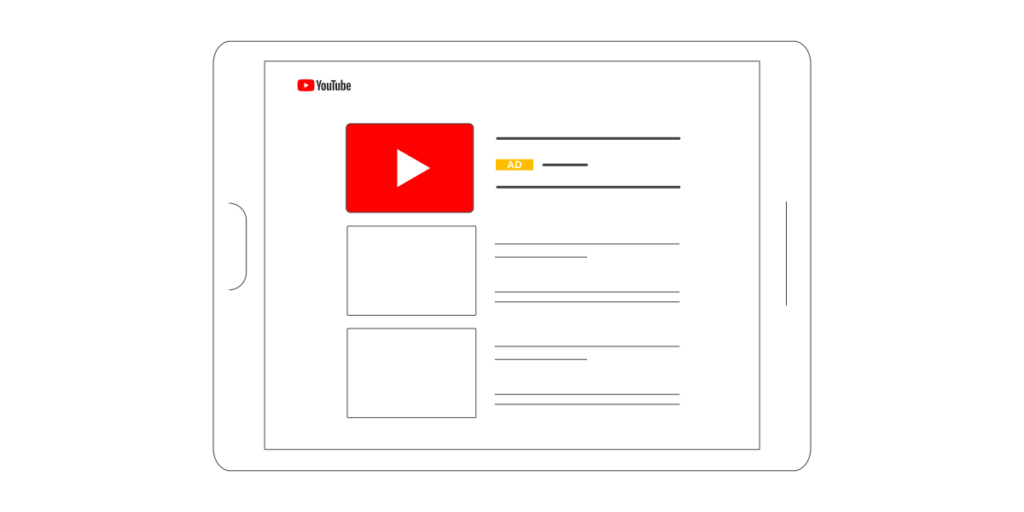Search advertising is one of the most effective ways for brands to reach broad yet determined audiences. The key advantage here is intent-based targeting. That’s why search ads have slowly but surely become superior to other ad formats (especially to regular display advertising) not only in terms of brand safety but also because of the much-improved customer journey. Simply put, search ads help match users with products they are actively looking for.
Search advertising is often associated with Google Ads only. However, Google is not the single provider of search ad solutions, and search ads don’t come in a singular form either.
And although the search market is indeed dominated by Google, it’s still a form of digital advertising enabled by various search engines. And almost all of them offer a way to monetize their traffic.
That’s why in this article we want to present a thorough overview of the search market inventory, talk about different types of search ads, explain how they work, and most importantly, help brand marketers understand how to utilize alternative search advertising solutions.
Search Autocomplete Ads
The first type of search ad we want to discuss today is one of the aforementioned alternatives — that is Search Autocomplete ads.
Search autocomplete technology offers a unique approach to search advertising in which ads are triggered even before users complete typing the search keyword into their mobile or desktop device search bar. Autocomplete search ads usually appear right underneath the input field (e.g. web search engine bar or a marketplace search) providing the most optimal user experience by showing suggested ads/search results related directly to the searched phrase.
Search Autocomplete Ads are available for both mobile and desktop devices. Platforms providing this specific search ad format are typically keyboard apps, marketplaces, browsers, and search engines. Although some search traffic providers host their own solutions, a variety of platforms and audiences can be accessed via performance marketing platforms allowing brands and marketers to instantly match with potential clients.
Simply put, search autocomplete ads utilize the power of contextual targeting to display ads relevant to what the user is looking for, but more importantly, this specific type of search advertising provides marketers with brand-safe and privacy-compliant cookieless solutions.

Search Ad Tiles
Another underutilized way to drive traffic to your brand is working with Search Ad Tiles, also known as Suggestion Tiles.
Search Ad Tiles allow marketers to display a logo of an advertised brand right in front of users’ eyes, exactly when they need it… or in the right context, one could say. This happens because search ad tiles are displayed in the form of a small icon right below the search bar or a text field your audience uses to enter the related keyword. Some placements can be fixed, and some can be dynamically displayed based on the set targeting.
The dynamic tile placement works on a similar basis to the Search Autocomplete solutions explained above. In this case, ad tiles appear as soon as users start typing their search queries into a search engine bar or a search text field. Search Ad Tiles are available for both mobile and desktop devices and are provided by a variety of apps, search engines (Opera or AVG Secure Search), or online marketplaces.
Both Autocomplete and Search Ads Tiles are purely intent-based solutions. They help drive users to your website, right from the moment they engage with a search bar. Unlike with the usual search text ads solutions, there’s no middle step of displaying the general SERP.
Overall, this is the most direct way for users to get what they want which makes Search Ad Tiles the ad format utilizing the fastest search-to-brand route available on the market.

Text Search Ads
Text search ads are the broadest category here, but one that cannot be overlooked. The most popular search text ads solution comes from the Google Search Ads platform, which dominates the search engine market with a 92.47% market share. They show either above or below organic results on the first SERP.
The mechanism behind search text search ads in Google is based on the second price auction. When many bidders place a bid, the highest bid wins, but rather than pay the set price for the bid, the bidder only has to pay $0.01 more than the second-highest bid. Google combines that with its Ad Rank algorithm that decides the position of your ads. The algorithm takes into consideration expected click-through rate, ad relevance, and landing page experience to decide the quality of your ad. If certain criteria aren’t met, the Google ads platform can decide not to show your ad despite a winning bid.
Search text ads are not exclusive to Google. In fact, other search engines such as Yahoo or Bing, or geo-specific options like Baidu and Yandex, also have their own search ads. Overall, they work similarly to Google’s search platform, often employing the second price auction and a form of ad ranking.
What’s more, Google, among others, offers responsive search ads (a successor to expanded text ads) where the algorithm tests up to 15 headlines and 4 titles to create the best combination for a given keyword or query.
Text search ads are a universal and advanced solution. They have many providers and the Google ads platform alone offers several variants, e.g. dynamic search ads; and additional features, e.g. ad extensions. But the availability and popularity are also what make search ads an extremely competitive field where the most expensive keywords cost $50 or more per click.

(source)
Shopping (Product) Search Ads
Search ads are by nature high-intent ads so it’s only logical to utilize them in the case of both shopping campaigns and brand awareness campaigns. Nonetheless, one of the most popular types of search ads is shopping ads. And how do shopping ads work?
Shopping ads (also known as simply product ads)display a tile-like product preview on top of or on the side of the search engine results page. In the case of Google shopping solutions, product previews form a line right under the search bar. They correspond to the search query, just like the rest of the results do, but offer a richer format that includes a product picture, a price, and a source URL.
Google Ads is not the only ad network that makes running shopping campaigns possible. For example, Bing’s search engine also enables shopping ads on the right side of their search engine results page. Pinterest, on the other hand, has shopping ads that seamlessly blend with the rest of the inspirational pictures, with the exception that these ads lead straight to a products page where users can make a purchase.
Among all the examples of shopping search ads platforms, a very prominent one is naturally the Amazon Advertising platform. Amazon is a product-based search engine which, in 2017, surpassed Google in the number of product searches. While this is not the most up-to-date data, there is no reason to believe that product searches on Amazon should be declining.
Amazon offers similar, although slightly inferior, tracking and optimization capabilities when compared to Google shopping ads. Still, it comes with plenty of advantages. To put it simply, the competition is smaller and targeting options are better, allowing for the most precise display of advertisements. What’s more, Amazon’s product targeting is the most unique and advantageous option that allows marketers to target by brand, star reviews, price, and Prime shipping eligibility.

(source)
Video Search Ads
Video search ads, powered by Google Ads and hosted by the YouTube platform, are among the search ad types perfect for brand awareness campaigns. YouTube Discovery Ads appear on the top of YouTube video search results, the video watch page, or on the YouTube Home feed on mobile devices. These are not auto-playing ads. In fact, these look exactly like organic search results with video thumbnails, titles, and descriptions, with an exception of an ad tag.
Because users have to click on the ads to actually view them, they are also called TrueView ads as opposed to ads that autoplay unprompted (which does not guarantee they were viewed, let alone intentionally). The last thing to remember is that YouTube Discovery Ads are only for brands that already have a functional YouTube channel. After all, the primary purpose of the campaign is to gather views of the video ad. Gathering subscribers or making sales are secondary goals.
Another example of video ads based on a search engine is Pinterest Video Ads.

(source)
App Install Search Ads
App Install Ads are a search-based ad format, most commonly used in mobile in-app environments. The two most prominent examples of this ad format are app install ads on Google Play and Apple Search Ads.
Google provides many options for install ads, however, most of them are display ads. The search-based Google Play Store listings are meant to aid in increasing the visibility and discoverability of your app. And with nearly 3.5 million apps in the store, that kind of help is often needed. The ads appear on top of the search results in the Google Play store and are matched based on keyword targeting with three options — broad, phrase, and exact match.
The Apple App Store is the second-largest app store in the world with 2.2 million apps. The purpose of Apple search ads is the same as their Google counterparts — to help users discover your app. This high-intent ad format offers keyword targeting and various options for displaying the ad. Your app campaigns can appear in a form of video, a selection of screenshots, or a plain form with text and an icon. The advertised app can be installed straight from the advertisement.

(source)
Display (Image Ads)
While the notion of display ads is completely different from search ads, the search advertising market doesn’t exclude expanded search formats such as Image Ads. An image ad or a display ad would usually appear in the form of a banner, interstitial, or full-page ad. But it can also be a search ad.
The best example of an image search ad would be Pinterest, with search-based targeting. Pinterest, although it is a standalone platform used for inspiration, it’s also an image-based search engine. Hence, ads appearing among the organic search results come in the form of images, integrating seamlessly with the grid.
What’s more, Pinterest is a platform where people look for inspiration and 46% of UK Pinners have discovered new brands or products on Pinterest. The demographics are leaning towards the female audience with higher incomes and the average age of a Pinterest user is 40 years old.

(source)
Search ads and brand advertising explained
As we mentioned at the beginning, search ads are currently an essential tool for brand marketers. This is because search ads can be hyper-targeted and directed straight at purchase-ready audiences.
While your marketing strategy can include many ad formats and campaign types, search ads are currently the best solution for brands looking to gain quality leads that turn into paying customers. Let’s consider some benefits.
Benefits of Search Ads for brand marketing
- Specific search ad types can reduce the customer journey to a maximum extent – skipping the search engine results page and leading users from the search bar straight to the brand’s website.
- Search ads are contextual and directly related to the search bar input, hence, they provide a high-quality user experience that isn’t distracting or intrusive.
- The short path from the intent-focused search query to the brand’s website leads to an overall higher conversion rate.
- If your brand’s website is lacking in SERP positioning, using search ads is a faster way of increasing visibility than through the process of search engine optimization.
- Search ad platforms allow you to test your strategies in a quick and efficient way by providing you with actionable data on clicks and conversions.
- Relying on programmatic advertising platforms offering search traffic inventory helps marketers maximize the reach and utilize the full potential of the available search market.
New programmatic solutions to revolutionize your business
What all search ad types have in common is that they lead the customer from the search bar through the search engine results page, and then show relevant ads right at the top as the most visible suggestions. There are, however, two ad types that skip the middle step.
Search Autocomplete Ads, as well as Search Ad Tiles, are both types of search ads triggered the second customer starts typing in a query. These ads will appear there and then, right under the search bar field. There is even no need to press enter and wait for the search results to load.
This is what makes such Google search ads alternatives a unique approach to a saturated and competitive market. This is also why and how NewProgramamtic solutions help performance marketers tap into a whole new search advertising market and get a headstart for the brands they promote. It’s also worth adding that both aforementioned ad formats work on the CPC cost model and offer worldwide inventory with robust targeting options.
Apart from the main targeting options being Branded Search (redirecting users looking for the brand’s product straight to the brand’s website) and Generic Keyword Search (redirecting users looking for the brand’s or related products straight to the brand’s or a related yet authorized site), users can be targeted based on devices and locations.
Please note there are no cookies involved in the process which makes Tiles and Autocomplete Search ads meet the highest standards of privacy.
Search Autocomplete Ads and Search Ad Tiles are simply a straightforward solution that works particularly well with an intent-driven audience, especially given the recent (and still growing!) shift towards product-specific marketplaces rather than broad search engine searches users now tend to perform.
Conclusions
What all search ads have in common is intent-based targeting. Users typing in a query into the search signifies readiness to discover, research, and finally buy a product. Search text ads are the most common type of search advertising so far, but the constantly evolving market and need for innovation called for new programmatic solutions to come onto the stage and take their fair share of the market. In a nutshell, global investments into online marketplaces keep increasing which gives way to more solutions providing marketers with a chance to match users with desired products exactly when and where they’re looking for them.
If you’d like to try an alternative approach to search advertising, we welcome you to book a demo and find out how NewProgrammatic can prove to be exactly what your business needs.




